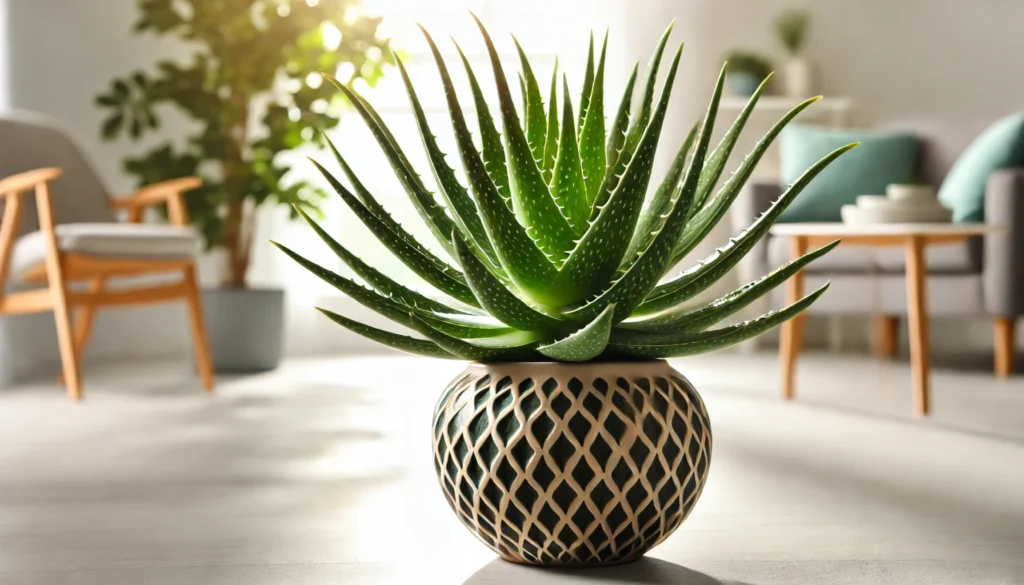
The Asparagus Fern, known for its feathery, light foliage, adds a touch of elegance to any indoor space. Despite its name, it is not a true fern but a member of the lily family. Let’s explore the characteristics, care requirements, and common issues of this charming plant.
Description and Size
The Asparagus Fern, scientifically known as Asparagus setaceus or Asparagus densiflorus, features delicate, needle-like leaves that give it a soft, feathery appearance. Indoors, it typically grows to a height of 1-3 feet, with a spread of 3-4 feet, creating a lush, full display. The plant can produce small white flowers and berries, adding to its ornamental appeal.
History and Natural Habitat
Native to South Africa, the Asparagus Fern thrives in tropical and subtropical climates. It has been cultivated worldwide as an ornamental plant, appreciated for its delicate foliage and ease of care. Despite its name and appearance, it is related to the edible asparagus and is not a true fern.
Ideal Growing Conditions
Light
The Asparagus Fern prefers bright, indirect light but can tolerate lower light conditions. However, in low light, the plant may grow more slowly and lose some of its fullness. Avoid direct sunlight, which can scorch its delicate leaves. A spot near an east or north-facing window is ideal.
Temperature and Humidity
This plant thrives in temperatures between 60-75°F (16-24°C) and prefers higher humidity levels. If the air in your home is dry, consider using a humidifier or placing the plant on a humidity tray. Regular misting can also help maintain the right humidity.
Soil
A well-draining potting mix is essential for the Asparagus Fern. A mix of peat, perlite, and pine bark works well, ensuring the soil remains moist but not soggy. Ensure the pot has good drainage holes to prevent waterlogging.
Watering
Water your Asparagus Fern thoroughly, allowing the top inch of soil to dry out between waterings. Overwatering can lead to root rot, while underwatering can cause the leaves to yellow and drop. Aim for consistent moisture without letting the plant sit in water.
Toxicity
The Asparagus Fern is mildly toxic to pets and humans if ingested, and its berries can cause gastrointestinal upset. Additionally, contact with its foliage can cause skin irritation in some individuals. It’s best to keep it out of reach of curious pets and children.
Common Problems and Solutions
Yellowing Leaves
- Cause: Overwatering or underwatering.
- Solution: Adjust watering practices to ensure the soil is consistently moist but not soggy, and allow the top inch to dry out between waterings.
Browning Leaf Tips
- Cause: Low humidity or underwatering.
- Solution: Increase humidity around the plant and ensure consistent watering.
Pests
- Common Pests: Spider mites, mealybugs, and aphids can affect Asparagus Ferns.
- Treatment: Use insecticidal soap or neem oil to treat infestations. Regularly inspect your plant to catch and address issues early.
Diseases
- Root Rot: Caused by overwatering and poor drainage. Ensure the soil is well-draining and allow it to dry out slightly between waterings.
- Leaf Spot: Fungal infections can cause brown spots on leaves. Improve air circulation and avoid overhead watering to keep the leaves dry.
Best Practices for Care
- Repotting: Repot every 2-3 years to refresh the soil and provide more space for growth. Spring is the best time for repotting.
- Fertilizing: Feed your plant with a balanced, water-soluble fertilizer every 4-6 weeks during the growing season (spring and summer).
- Pruning: Trim any dead or yellowing leaves to maintain the plant’s health and appearance. Pruning also helps to promote new growth and maintain a desirable shape.
Overall Ease of Care
The Asparagus Fern is a fantastic choice for both novice and experienced plant owners. Its adaptability to various light and humidity conditions, coupled with its relatively low maintenance needs, makes it an easy-to-care-for plant. Its delicate, feathery foliage adds a touch of elegance and softness to any indoor space.
In conclusion, the Asparagus Fern is a beautiful, low-maintenance addition to your home. With the right care and attention, it will thrive, providing lush greenery and enhancing the aesthetic of your indoor garden.



